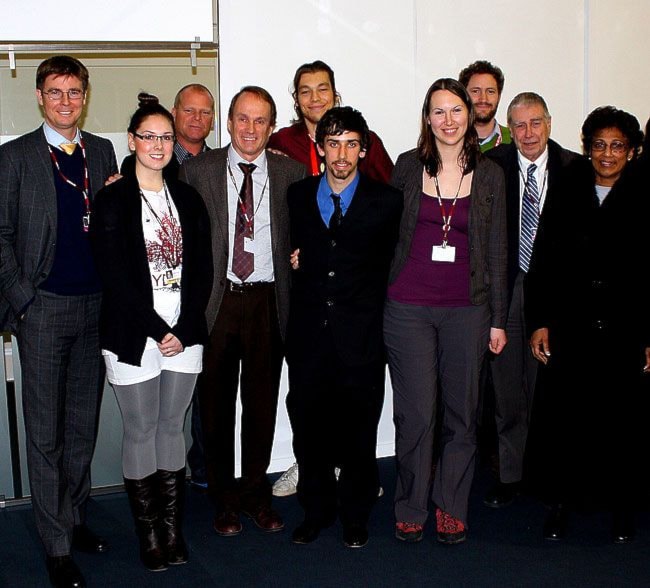It was December 2009, and 28-year-old Yukoner Amber Church was in Denmark participating in a “bed-in.”
She was sitting outside one of the Bella Centre plenary rooms in her pajamas clutching a pillow and blanket while singing an altered version of The Beatles song, Give Peace a Chance.
“We sang Give Youth a Chance; that was our message,” said Church, who attended the United Nations Climate Change Meetings in Copenhagen, or COP15 as it’s also known.
Church is the national director of the Canadian Youth Climate Coalition and she was part of the 1,500-strong delegation of youth at the conference, and part of a group of 50 involved in an international youth “bed-in,”- hence the pajamas.
The “bed-in” referenced the famous Bed-Ins for Peace which were staged during the Vietnam War in 1969, by John Lennon and Yoko Ono.
While Lennon and Ono stayed in bed for a week, the youth protesters in Copenhagen only made it a few hours with their pillows and blankets, but the demonstration still hit its intended target - the media.
“We were surrounded by hundreds of cameras, so I don’t even know how many people we reached,” she said.
The bed-in was just one of many ways that people took action at a conference that was otherwise a huge disappointment.
Basically, negotiations fell apart, said Church. Some developed countries, which contribute most to climate change, were doing the least to stop it and developing nations were frustrated.
Canada, which had agreed to cut its emissions by a mere three per cent below 1990 levels, was one of the worst offenders, according to Church.
“We were hoping to have a legally binding aggressive agreement and what we ended up with was nothing,” she said. “There was no agreement at all.”
People were frustrated but they did not give up, said Church. “Either you’re overwhelmed and you give up or you decide to stand up and do something, and I chose to stand up and do something.”
So did millions of people worldwide.
“In terms of public action, I’ve never seen anything like it,” said Church.
“It was inspiring: it speaks to the fact that public awareness has heightened.
“We’re seeing people who have never taken political action before feeling strongly enough about the issue to stand up for it.”
“It’s like watching a snowball rolling down a hill and we’re seeing that snowball getting bigger.”
Copenhagen was also the first time that youth were granted constituency status at the conference. This was considered a big step.
They were allowed the right to speak during sessions; they could organize meeting spaces and they could book their own events.
On Wednesday, February 3, at 7 p.m. Church will give a presentation on the Copenhagen conference from her point of view at the MacBride Museum of Yukon History.
Church’s talk will be the first in a series of five free presentations on climate change that MacBride Museum will host between February 3 and March 3.
The series is presented in partnership with the Northern Climate ExChange and Yukon College.
Next week, on February 10, at 7 p.m., Yukon wildlife viewing biologist Bruce Bennett will speak on Climate Change and Yukon Invasive Species.
All presentations are free and everybody is welcome.
This column is provided by the MacBride Museum of Yukon History. Each week it will explore a different morsel of Yukon’s modern history. For more information, or to comment on anything in this column e-mail lchalykoff@macbridemuseum.com.
